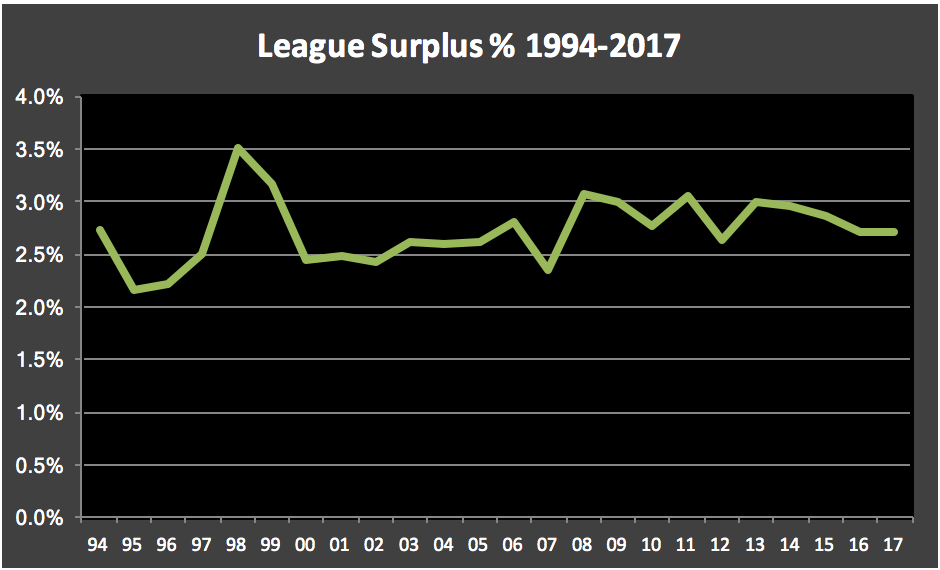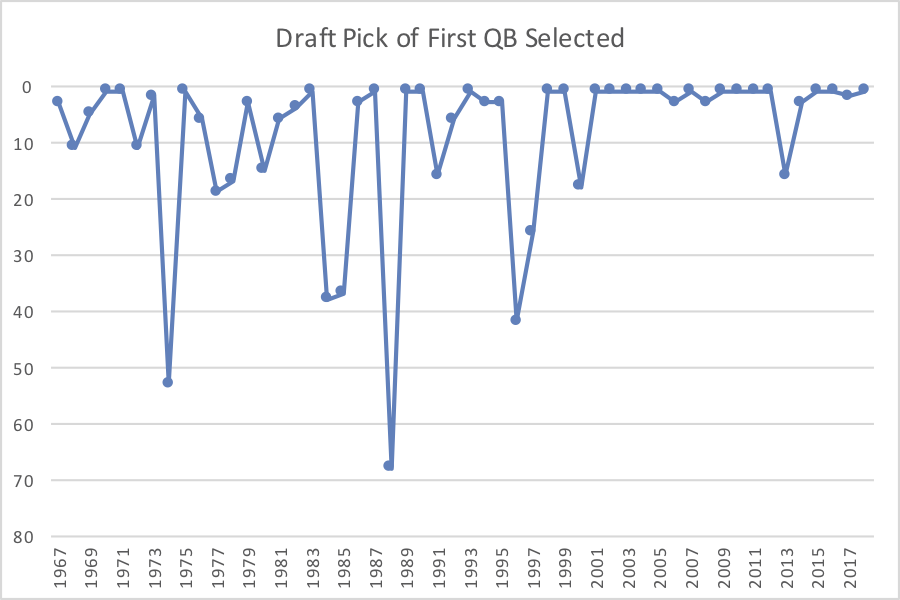WARNING: unbalanced footnote start tag short code found.
If this warning is irrelevant, please disable the syntax validation feature in the dashboard under General settings > Footnote start and end short codes > Check for balanced shortcodes.
Unbalanced start tag short code found before:
“From 1970-present, I used the Associated Press All-Pro Team. I counted First-Team selections as 3 points and Second-Team selections as 1 point. A First-Team selection by one or more other major organizations, for a player not named First-Team by AP, counts as +1, and an MVP selection by any major o…”
Brad Oremland is a longtime commenter and a fellow football historian. Brad is also a senior NFL writer at Sports Central. There are few who have given as much thought to the history of quarterbacks and quarterback ranking systems as Brad has over the years. What follows is Brad’s latest work on quarterback statistical production.
This is the penultimate article in a seven-part series. It is a supplement to my series on the greatest quarterbacks of all time, last year’s article on the top-ranked QBs in Total Statistical Production, and last month’s post about QB-TSP in the 2017 season and another way of using TSP. Over the last five weeks, I’ve written about the top 100 quarterbacks of the Modern Era, as ranked by TSP:
This article presents a different way of evaluating quarterbacks. It is data-heavy, so if you’re just here for my prose, I’m sorry to disappoint. The chart below shows those same 100 QBs, along with each player’s: Adjusted TSP, Career Value, Seasons among the top 10 in QB-TSP, Top-10-Points, Year-Points, 500-TSP seasons, 1,000-TSP seasons, 1,500-TSP seasons, 2,000-TSP seasons, 2,250-TSP seasons, 2,500-TSP seasons, Pro Bowls, All-Pro honors ((From 1970-present, I used the Associated Press All-Pro Team. I counted First-Team selections as 3 points and Second-Team selections as 1 point. A First-Team selection by one or more other major organizations, for a player not named First-Team by AP, counts as +1, and an MVP selection by any major organization was worth +1.
For instance, in 2016, Tom Brady was named Second-Team All-Pro by AP (1 pt), but First-Team by the Sporting News, so he scored 2 pts that season. The score of AP First-Team All-Pro Matt Ryan was unaffected, remaining 4 points (including his MVP selection). In 1993, the AP All-Pros were Steve Young and John Elway, but the Sporting News chose Troy Aikman. Young scored 3, and Aikman and Elway 1 each. In 1990, Joe Montana scored 4 points, with Randall Cunningham and Warren Moon earning 2 each. [continue reading…]






